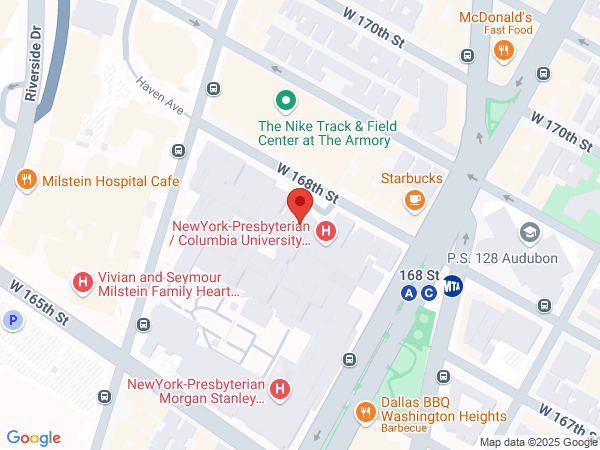Columbia University Biobank
The Columbia University Biobank (CUB) is a CUIMC-wide effort to enroll all patients of CUIMC-NYP into a unified, longitudinal biobank research protocol with broad future use and data sharing allowances. CUB refers to both the central recruitment initiative and the resulting biobank, and was created to:
- Give all interested participants the opportunity to enroll into our biobank and engage with our research programs
- Improve the enrollment and sample collection process for participants, while also creating better safeguards for collected samples and data
- Ensure donated materials have the greatest possible impact on scientific research by facilitating their use by CUIMC researchers across fields
- Accelerate the launch of new projects and efforts to advance research into understudied and rare conditions
To fulfill these aims, CUB has created a number of resources to enable ongoing enrollment of NYP/CUIMC patients and create a comprehensive biobank of samples and clinical data that are available to all Columbia researchers.
Services
CUB primarily serves the CUIMC community in two ways: by facilitating researcher access to existing biobank samples and by assisting CUIMC departments and researchers with the targeted enrollment of patient populations into CUB.
Biobank Sample Access
Samples and data collected after participant enrollment into CUB are deposited into the CUB Biobank. Distribution of these samples is governed by the CUB Sample and Data Access Committee (SDAC).
Any CUIMC investigator can query the CUB OpenSpecimen catalog to identify samples, which can then be requested by submitting a Sample and Data Access Application. Applications are reviewed by SDAC for scientific justification and need. For more information, please review the CUB Policy and Guidance for Sample and Data Access.
Biobank Enrollment
CUB can work with researchers to perform enrollment of patient groups on their behalf. Examples of CUB recruitment capabilities are described below, but recruitment can be a very tailored process depending on specific research aims and the conditions that are being studied. CUIMC researchers seeking to build out new or unique biobanks should contact CUB staff to determine how CUB resources can best advance their research efforts.
CUB Resources
IRB protocol
CUB maintains an umbrella IRB protocol to support biobanking that includes eligibility for all CUIMC-NYP patients. Consent allowances include access to EHR data, genomics research and return of results, serial sample collection, banking of residual specimens and re-draws, re-contact for future research, and potential for sharing of data and samples with external collaborators (including industry partnerships). A “living model” addendum also allows for collection of additional tissue or biospecimens at the time of clinical procedures and use of those specimens to generate PDX models, explants, organoids, iPSCs, and other cell lines.
As this protocol is maintained centrally, use of the CUB protocol reduces administrative burden on individual PIs and ensures the protocol remains up-to-date with the latest research and safety standards.
Enrollment and engagement methods
With a focus on automated and scalable recruitment, CUB has developed multiple methods to reach and enroll potential biobank participants. Participants can be identified based on the location of their clinical care or their clinical diagnosis, and CUB staff will work with clinical care teams to determine the best methods for enrollment (which can take place both remotely and in person). CUB has also created video consent resources for participants and maintains a bi-annual newsletter (in English and Spanish) to help patients understand the value of their research contributions.
Sample procurement and processing
Patients enrolled under CUB will have an Epic order placed in their chart for a research blood draw to be collected at the time of their next routine clinical visit, minimizing the need for additional needle sticks. Samples collected in this way are processed by the BRIDGE laboratory into serum, plasma, and buffy coat aliquots that are held at -80 for long-term storage.
Alternatively, in cases where specialized sample types or processing protocols are needed, CUB can assist with patient enrollment while leaving sample procurement and processing up to the individual PI’s laboratory. Please contact us for more information on specialized processing workflows.
Sample accessibility
Samples collected under the CUB protocol are part of the institutional biobank and therefore potentially available for use by any CUIMC/CU investigator. However, the CUB has several governance mechanisms to ensure that research groups working under grants that fund biobank activities or those involved in collecting rare and valuable specimens have access to the materials they need, and that rare samples are not unnecessarily depleted.
External Users
At this time, CUB requires external researchers or organizations interested in accessing CUB materials to work with a CU collaborator. For more information on external collaborations or to discuss the feasibility of a project, please contact Danielle Pendrick.

